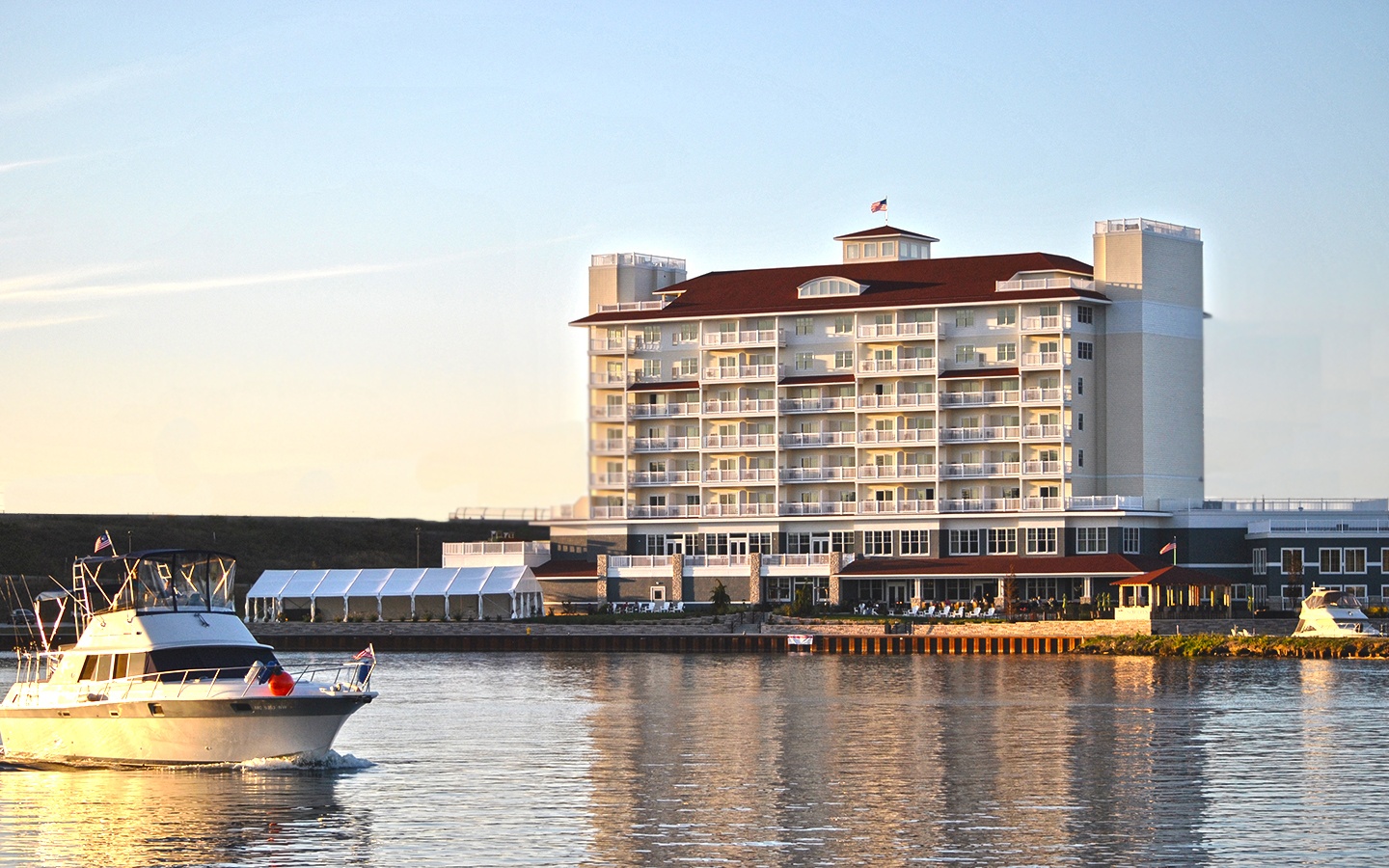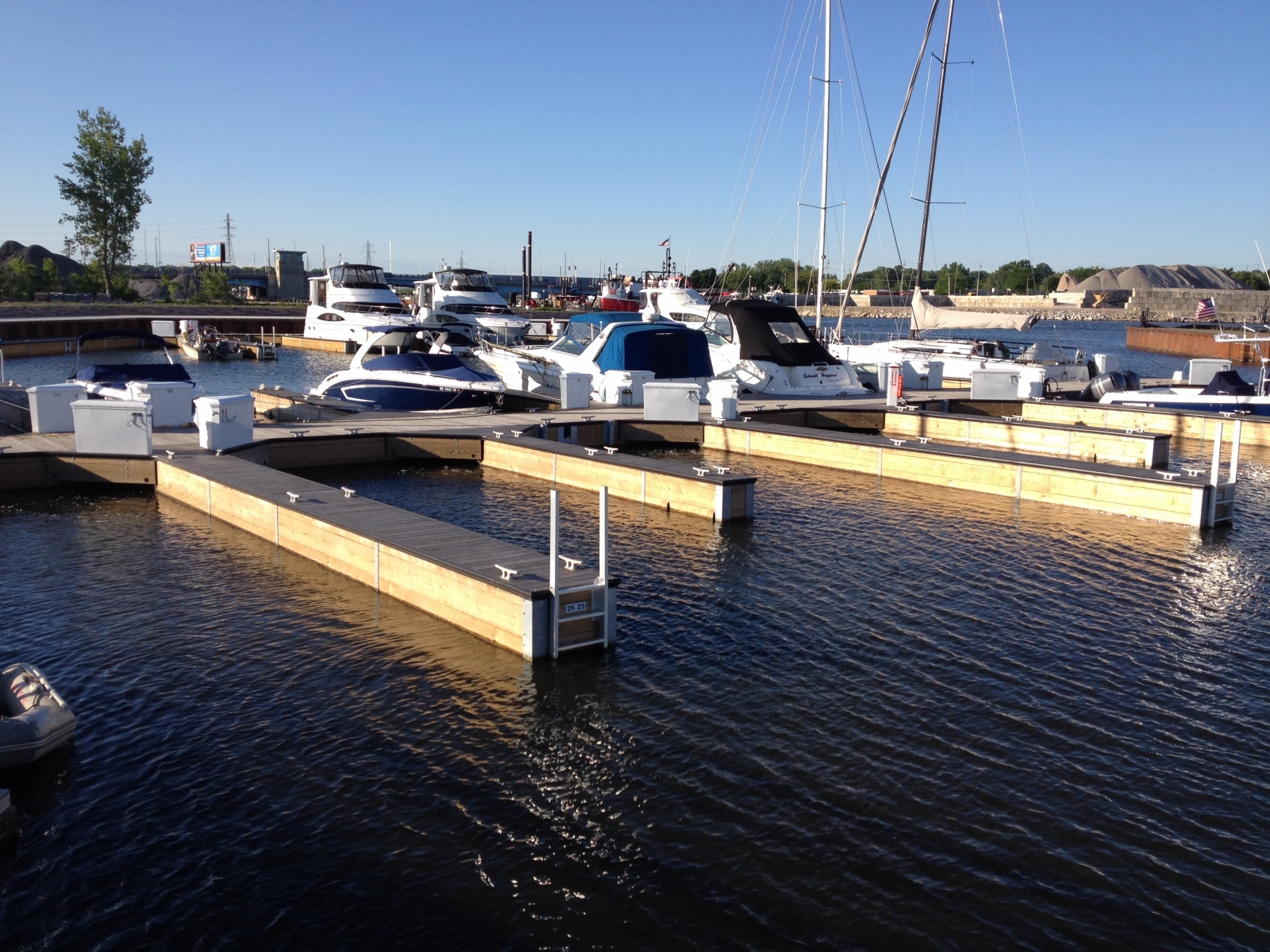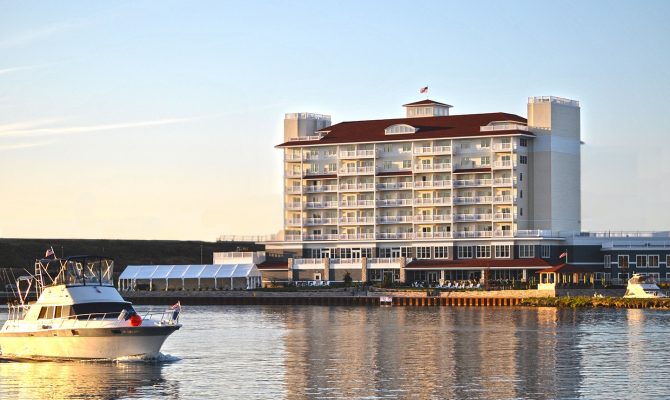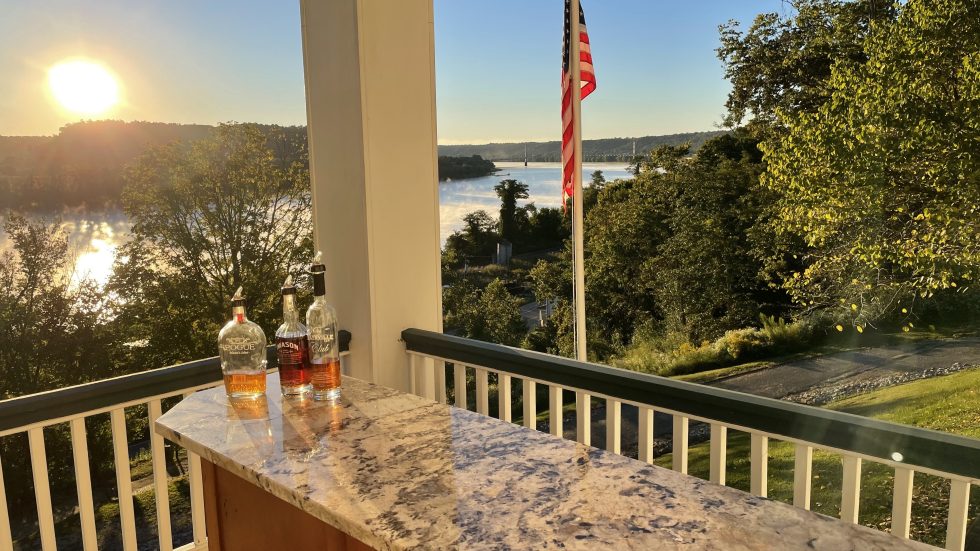The marina lies on the north side of the St. Joseph River, adjacent to the Paw Paw River and Benton Harbor, and is just a fraction of a mile from Lake Michigan. Featuring 68 slips with docks of 35 and 40 feet in length along with 1,500 feet of broadside docking capable of berthing yachts up to 200 feet, this state-of-the-art marina is one of the few deep-water marinas in the area. The marina basin is 12 feet deep, and the facility has direct deep-water access to Lake Michigan.
Adjacent to the marina is the Inn at Harbor Shores, made up of a main building with 96 rooms and two floors containing condos. Hotel condos, condominium buildings and housing of all types and size surround the rest of the marina. A Jack Nicklaus Signature Golf Course winds through the development. Guests of the marina can utilize the Inn’s facilities, including pool, fitness facilities and the PGA golf course.
New Future
Looking at the marina and its surroundings today, it would be hard to imagine that the waterfront used to be a massive industrial site where thousands of washers and dryers were manufactured each day. As the headquarters for Whirlpool, the waterfront parcel was the location of its main manufacturing plant well in to the mid-80s. After a succession of strikes and labor disputes, manufacturing moved overseas and the plant shut down. At that point Whirlpool, which had been in the area since its inception, was considering moving its administrative offices to Chicago. After extensive studies, the company decided to take the money it would have spent in moving and invest it back into the communities of Benton Harbor and St. Joseph in a revitalization effort. It also built an all-new administrative office center on the waterfront and encouraged local and state governments to also work at revitalizing and redeveloping the community.

The Inn at Harbor Shores.
Greg Weykamp, a principal at Edgewater Resources, started work on the development of The Marina at Harbor Shores along with the Inn at Harbor Shores. Both were part of the overall development of Harbor Shores, with a variety of residential homes and buildings. Weykamp explained that the Edgewater Resources’ main goals are to “help communities and landowners enhance their waterfronts, with a focus on planning, design and engineering solutions based on economic reality.” The company is not only interested in creating a viable waterfront and marina, but also one that will benefit the community.
Job Creation
The marina and inn are definitely benefiting the community. Between the two projects, they have created 480 jobs. The marina is now a great destination for visitors from the Chicago area, who can arrive after a 2.5- to three-hour boat ride. There are full-time residents with boats docked for the full season, along with vacationers and transients renting slips. It is already becoming a popular spot for cruisers traveling through the area doing the Great Loop; many appreciate the deep-water access. In fact, the marina’s first season, it had full occupancy all season.
With dredging that will occur early this season, the 350 feet of broadside docking will expand to 1,500 feet and will allow for boaters to utilize the docks and enjoy the dockside restaurants located at the inn. There is also a walkway that runs along the waterfront and marina and allows public access to the whole waterfront. This was an important factor in developing the property, so that it would benefit not just marina patrons and residents but also the whole community.
Innovative Materials
The marina itself is designed and built with the latest technology and materials. Flotation Docking Systems of Cedarville, Mich., constructed and installed the floating docks. The docks were built in-house at Flotation Docking Systems and then trucked out to Harbor Shores, where they were floated and installed.

Cody Carmichael of Flotation Docking Systems said that the docks are held in place by a system developed by his father called a telescoping spud system. With this system, an outer pipe, which can sometimes be five inches in diameter, is attached to the dock and extends down into the water column with nothing above the deck. Then, an inner pipe is placed inside the outer pipe and dropped or driven into the bottom of the marina. This system allows for the dock to move up and down freely even in ice conditions and allows for a clean and clear dock with no piling above the deck.
The marina also has an advanced shorepower system that can identify current in the water and immediately shut down a leg of the system with the fault and eliminate the chance of electric shock, without having to shut down power to the whole marina. Eaton manufactured the electrical substation, and the ground fault protection is a Binder system. This system proved itself already in the early days of the marina by identifying a transient yacht with a potentially dangerous onboard electrical issue.
The decking at the marina is notable in its own right. It is constructed of Kebony, a treated wood manufactured in Norway with operations opening soon in Michigan. Kebony wood is a high-quality sustainable lumber like pine that is impregnated with a bio-based liquid and then is heat treated. The wood is permanently transformed into a lumber that has the consistency and longevity of a tropical hardwood. With impressive durability and dimensional stability, it looks great and has the feel of natural wood, all while being extremely durable, Weykamp said. The marina has yet to replace one board.
With innovative development and construction, the Marina at Harbor Shores has not only played a role in rehabilitating a waterfront, but it is a shining example of how integral a marina can be to enhancing a waterfront community.
Author: Glenn Hayes is a contributor to HeartLand Boating



